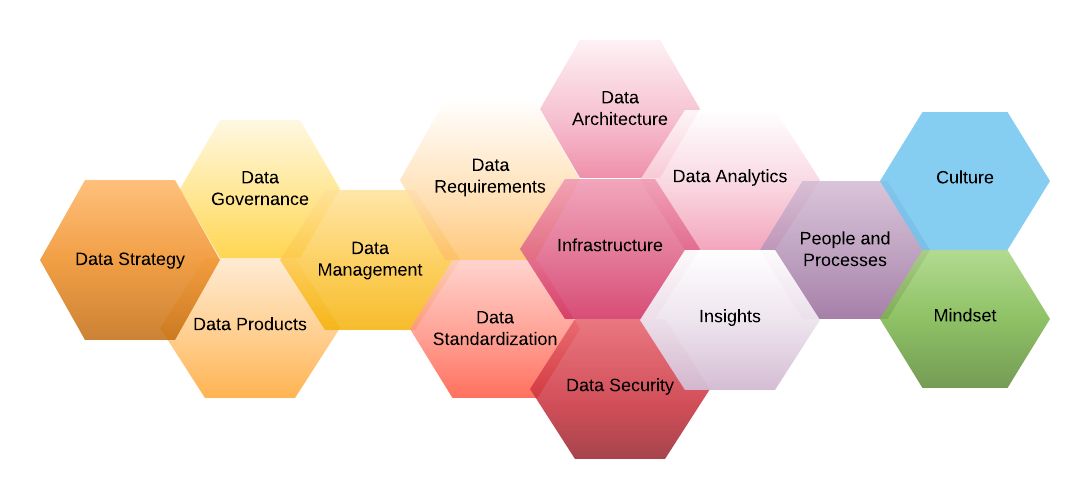In today’s digitally-driven world, the sheer volume, velocity, and variety of data being generated are staggering. From social media interactions and online transactions to sensor readings and machine logs, every digital interaction leaves behind a trail of data. This deluge of data, often referred to as “big data,” presents both challenges and opportunities for organizations across industries. In this post, we will explore the world of big data, its significance, challenges, and the strategies for navigating this vast and complex landscape.
Big data refers to large volumes of structured, semi-structured, and unstructured data that cannot be processed or analyzed using traditional database management tools and techniques. The term “big” does not only refer to the size of the data but also encompasses other characteristics such as the velocity at which data is generated, the variety of data types, and the veracity or trustworthiness of the data. Big data is characterized by its three Vs: volume, velocity, and variety.
The volume of data generated globally is growing exponentially, driven by factors such as the proliferation of connected devices, the digitization of processes and services, and the increasing adoption of social media and online platforms. This massive volume of data presents challenges in terms of storage, processing, and analysis, requiring organizations to invest in scalable infrastructure and advanced analytics capabilities to harness its potential.
The velocity at which data is generated is another defining characteristic of big data. With the advent of real-time data streams from sources such as social media, sensors, and IoT devices, organizations are inundated with a constant flow of data that must be processed and analyzed in near real-time. This velocity of data requires organizations to adopt agile and responsive analytics solutions that can quickly extract insights and derive value from streaming data sources.
The variety of data types and formats present in big data adds another layer of complexity to the analytics process. From structured data in relational databases to semi-structured data in XML and JSON formats, and unstructured data in text, images, and video, big data encompasses a diverse range of data sources and formats. Analyzing and integrating these disparate data sources require advanced analytics techniques such as data mining, machine learning, and natural language processing.
Despite the challenges posed by big data, it also presents significant opportunities for organizations to gain valuable insights, improve decision-making, and drive innovation. By leveraging advanced analytics and machine learning algorithms, organizations can extract actionable insights from big data to inform strategic initiatives, optimize operations, and enhance customer experiences. From predictive analytics to prescriptive analytics, big data enables organizations to anticipate trends, identify patterns, and make data-driven decisions in real-time.
Moreover, big data has applications across various industries, including finance, healthcare, retail, manufacturing, and beyond. In finance, big data analytics enables fraud detection, risk management, and algorithmic trading by analyzing large volumes of transaction data in real-time. In healthcare, big data analytics facilitates personalized medicine, disease prediction, and population health management by analyzing electronic health records, genomic data, and sensor data from wearable devices.
In retail, big data analytics powers customer segmentation, product recommendations, and supply chain optimization by analyzing customer transaction data, social media interactions, and inventory levels. In manufacturing, big data analytics enables predictive maintenance, quality control, and supply chain optimization by analyzing sensor data from machines and production processes. Across these industries and more, big data analytics is driving innovation and transforming business processes.
However, realizing the full potential of big data requires organizations to address several key challenges, including data quality, privacy, security, and talent shortages. Ensuring the accuracy, completeness, and consistency of data is critical to the success of big data analytics initiatives. Organizations must also implement robust data governance and security measures to protect sensitive data and comply with regulatory requirements.
Furthermore, the shortage of data scientists and analytics professionals poses a significant barrier to the adoption of big data analytics. Organizations must invest in training and talent development initiatives to build a skilled workforce capable of harnessing the power of big data. Additionally, collaboration and partnerships with academic institutions and technology vendors can help organizations access the expertise and resources needed to navigate the complex landscape of big data analytics.
In conclusion, big data represents a vast and complex landscape of opportunities and challenges for organisations seeking to harness the power of data-driven insights. By embracing advanced analytics techniques and investing in callable infrastructure and talent development initiatives, organisations can navigate the world of big data and unlock its full potential to drive innovation, enhance decision-making, and create value in today’s data-driven economy.



